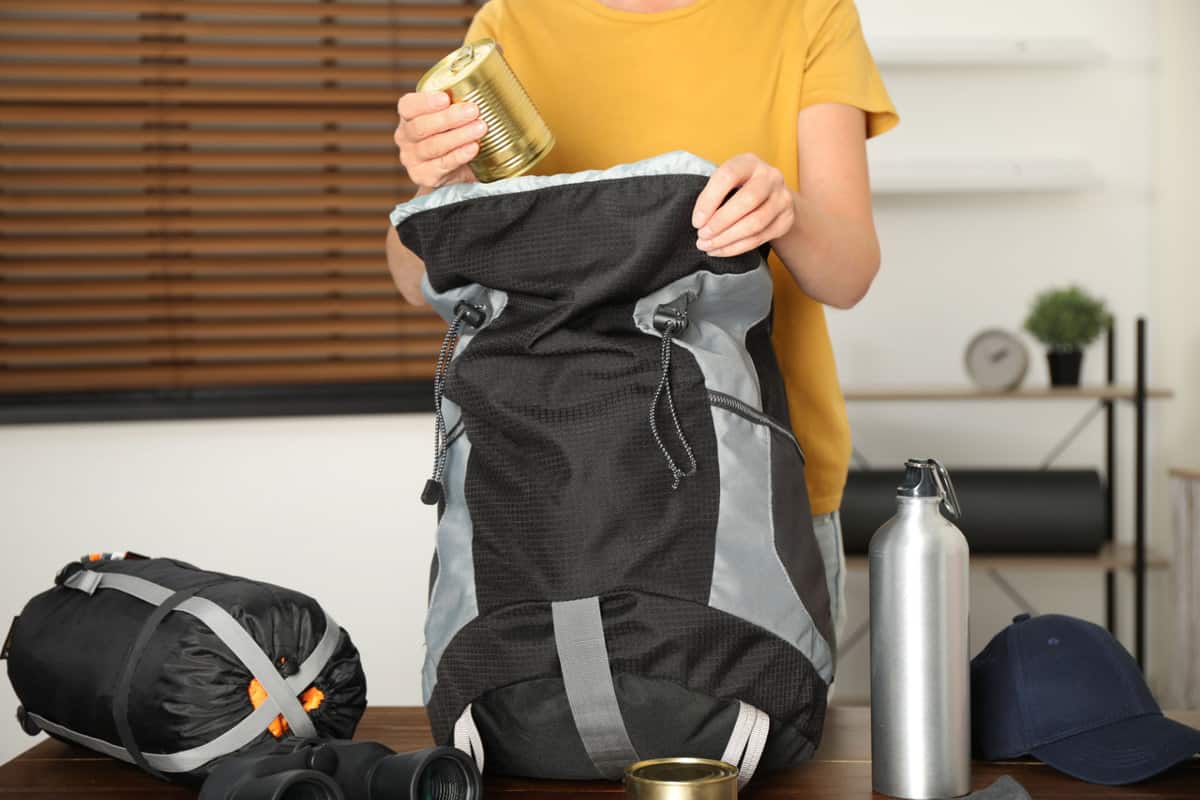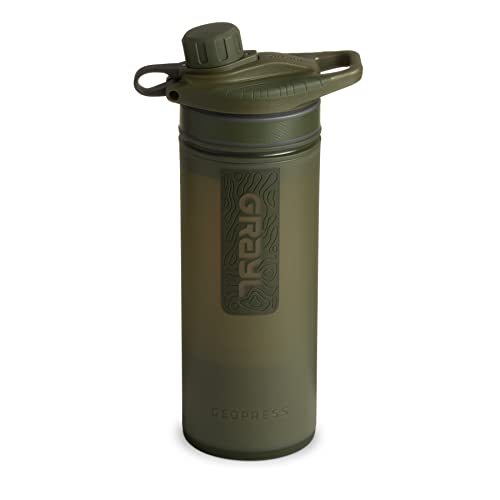Packing for a week in Yellowstone may initially seem straightforward - camping gear and hiking boots.
But to fully experience Yellowstone's diverse landscapes and wilderness, some additional preparation and gear can greatly enhance your adventure.
This guide outlines essential items you may not have realized you need when packing for Yellowstone.

With thoughtful preparation, you'll be ready to take on the park's varied terrain and marvel at its natural wonders.
Use this list to make sure you have the ideal gear for an unforgettable week exploring one of America's most magnificent national parks.
Specific Clothing For Yellowstone's Variable Weather
Yellowstone's weather is notorious for its unpredictability. Even in the height of summer, temperatures can vary significantly between day and night.
Moreover, the park's vast elevation changes can mean you're in shorts and a t-shirt at one location and bundling up in a jacket at another.
1. Quick-dry Underwear and Socks: Cotton takes forever to dry, and wet feet from fording streams can quickly lead to painful blisters during long hikes. Synthetic moisture-wicking socks are essential.
2. Wool Layers: Unlike cotton, wool keeps you warm even when wet, like when caught in an unexpected thundershower. Wool is also less smelly after multiple wears between laundering on long trips.
3. Rain Gear: Afternoon thunderstorms are common in Yellowstone, so a waterproof poncho or jacket is crucial, even if the morning looks sunny. Don't rely on the forecast; be prepared for any weather.
4. Hat with a Brim: A wide brim provides vital protection against the high-elevation sun at places like the Grand Canyon of Yellowstone, preventing sunburn on your face and neck. The brim also blocks rain.
5. Gloves: Even in summer, temperatures can dip below freezing at high elevations early in the morning. Gloves keep your hands warm and also protect them while setting up camp.
Footwear For Diverse Terrain
Yellowstone offers more than 1,000 miles of hiking trails, ranging from flat and easy walks to challenging backcountry hikes.
The proper footwear is essential, not just for comfort but for safety, too. Wet or unstable terrain is common, and the right shoes can make all the difference.
1. Hiking Boots: With hundreds of miles of trails, from rocky paths to muddy tracks, sturdy hiking boots with ankle support are crucial to prevent injury. Make sure to break them in before your trip to avoid blisters.
2. Water Shoes: Water shoes with grippy soles provide traction on slippery surfaces for safe creek crossings or walking through hot spring runoff. They drain quickly when wet.
Food Storage To Keep Wildlife Wild
How you handle and pack your food is crucial in a wilderness area like Yellowstone, where wildlife like bears are prevalent.
Not only is it about safety, but it's also about respecting the park's inhabitants and ensuring the animals don't become accustomed to human food.
1. Bear-Resistant Food Container: Bears' powerful sense of smell can detect food miles away. A certified bear-resistant cooler prevents critters from accessing your food and teaches them not to associate humans with meals.
2. Water Filter/Purifier: Bacteria and parasites lurk in backcountry water sources. A portable water filter or purifier ensures you can safely drink from Yellowstone's lakes and streams.
3. High-calorie Snacks: Long days of hiking burn lots of calories, and fatigue can lead to poor decisions and risks. Portable protein and nutrition bars provide critical energy boosts.
Navigation and Communication Tools
While Yellowstone is a well-visited park, it's also a vast wilderness area.
Many park areas don't have cell service, and getting turned around is easy, especially in the backcountry.
It's essential to be prepared and have tools to help you navigate.
1. Topographical Map: Don't rely solely on GPS. Bring a map to navigate the terrain and avoid getting lost if your GPS fails.
2. Compass: Basic orienteering skills can be a lifesaver. Bring a compass to navigate using map and terrain features if you lose your way and don't have GPS or cell service.
We also recommend downloading maps to phones as backup.
3. Whistle: Useful for signaling for help; its sound carries farther than your voice. Bring a whistle to call for help if injured, as its sound will carry farther than your voice to attract rescuers.
4. Satellite Messenger: Cell service is spotty at best. Bring a satellite messenger like SPOT or InReach to call for help or alert emergency contacts if you are injured in an area without cell coverage.
Camping Needs For Geothermal Areas
Camping in Yellowstone is an unforgettable experience. The park offers both front-country campsites and backcountry spots for the more adventurous.
However, the park's unique geothermal features and wildlife present unique challenges, and being prepared is key.
1. Tarp: Can serve multiple purposes, from a ground cover to an emergency shelter. Bring a tarp to provide a ground sheet, emergency rain/sun shelter, or makeshift windbreak at your campsite near geothermal areas.
2. Portable Stove: Make sure it's approved for use in the park. Bring a portable stove approved for the park to safely cook meals away from your vehicle at dispersed camping areas.
3. Lightweight Backpacking Chair: Great for rest stops during hikes. Bring a lightweight chair to sit and rest your feet during day hikes near geothermal areas without a picnic table.
Note that RV camping has different needs than backcountry tent camping, so pack everything you will need for your campsite.
Staying Safe Among Yellowstone's Wildlife
Yellowstone is home to a diverse range of wildlife, including grizzly bears, black bears, wolves, and bison.
While these animals are a treat to observe from a distance, it's crucial to know how to behave around them to ensure your safety and theirs.
1. Bear Spray: Know how to use it before you need it. Bring bear spray and learn how to use it properly to deter bears if charged at your campsite or on the trail.
2. Bear Bells: To make noise and alert wildlife of your presence. Bring a bell and actively use it while hiking to avoid surprising bears and allow them to hear you coming to prevent encounters.
Problem-Solving Extras
Beyond the basics, a few items can make your trip smoother, especially if you run into hitches.
These items can be lifesavers, from ensuring you leave no trace to being prepared for minor injuries.
1. Pocket Knife/Multi-tool: Always useful in a pinch. Bring a multi-tool for minor repairs, cutting rope/twine, or unexpected needs that may come up during your trip.
2. First Aid Kit: Include blister treatment. Pack a fully stocked first aid kit suitable for wilderness medicine, including supplies for treating cuts, blisters, and sprains.
3. Solar Charger: For your devices, use them sparingly to enjoy the natural setting. Bring a solar charger to keep devices powered without relying on an outlet if your car is unavailable.
4. Insect Repellent: The mosquitoes can be relentless. Pack insect repellent to stay protected from mosquitoes and ticks while enjoying the outdoors.
5. Headlamp: More beneficial than a flashlight, as it leaves your hands free. Bring a hands-free headlamp for lighting campsites, reading maps, or finding your way back if caught out after dark.
6. Biodegradable Soap: Good for you and the environment. Bring biodegradable soap for washing hands and dishes while leaving no trace in the park's fragile ecosystems.
Photography Must-Haves
Yellowstone's breathtaking landscapes, unique geothermal features, and abundant wildlife make it a photographer's dream.
A few items can help you capture the best shots, whether an amateur or a professional.
1. Lens Wipes: The dust can get everywhere. Bring lens cleaning wipes to keep filters, lenses, and screens free of dust and dirt for crystal-clear photos.
2. Extra SD Cards: You'll be taking lots of photos. Pack spare high-capacity SD cards to ensure you don't miss a shot and can save all your beautiful national park memories.
3. Portable Tripod: For those perfect sunrise and sunset shots. Bring a lightweight tripod for long exposures, low light scenes, or to keep your camera stable for sharp wildlife photos.
Luxury Items
While they might not be essential for survival, these items can enhance your experience in the park.
From stargazing under some of the clearest skies to identifying that bird you've never seen, these little things can make your trip memorable.
1. Telescope: The stargazing is incredible. Bring a telescope for amazing night sky views in one of the darkest places in the Lower 48.
2. Field Guide: To birds, trees, or geothermal features; whatever interests you. Pack field guides on topics that interest you to learn more about the incredible diversity of life you'll experience in Yellowstone.
Perfecting Your Pack for Yellowstone
You have valuable insights into gear and preparation for a Yellowstone trip by now. Thoughtful packing makes the difference between a good visit and an unforgettable experience.
Use this guide to ensure you have the tools to engage fully with Yellowstone's landscapes and ecosystems.
The proper preparation allows you to focus on creating incredible memories, not scrambling for missing equipment.
Use the list to double-check your packing and prepare for a fantastic adventure.
With your essentials covered, you can immerse yourself in the natural marvels of the park. Happy Yellowstone travels!
Beyond the essentials, there are innovative tools to elevate your packing game. Look into these recommendations:
9 Types of Travel Packing Organizers You Should Know
13 Best Travel Packing Cubes That Will Work Great When Traveling




























